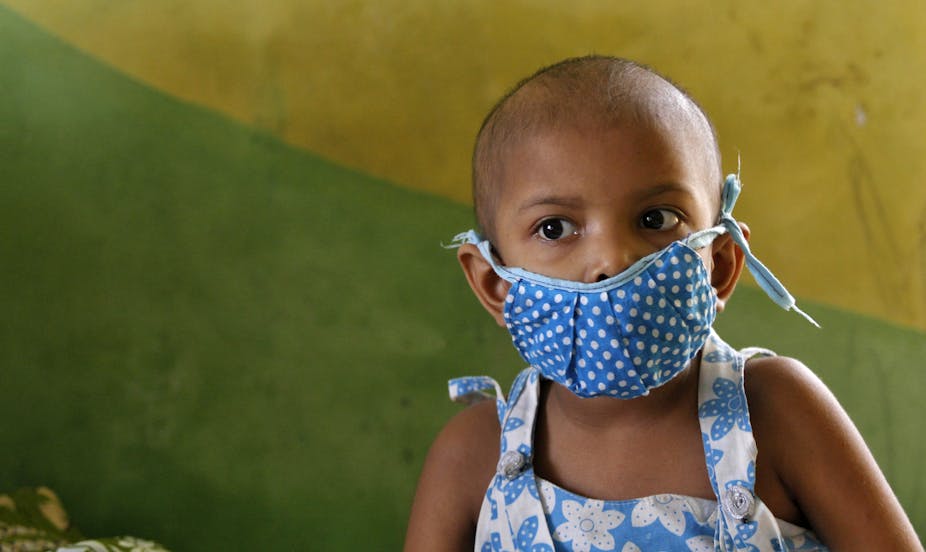Like most things, cancer diagnosis is not equal for men and women.
In adults, sexual hormones, dietary habits, exposure to carcinogens, smoking and alcohol consumption combine to give rise to a situation where more men than women are diagnosed with cancer globally.
Worldwide, 7.4 million cancers are diagnosed in men and 6.6 million are diagnosed in women. Lung, prostate and colorectal cancer are the most common types among men, whereas breast, colorectal and lung cancer are the top three among women.
But the factors that lead to this difference between the genders all affect us later in life, and should not apply to children. Yet the present data shows that more boys than girls are diagnosed with cancer worldwide.
The same risk
Survival rates of childhood cancers have increased dramatically in high-income countries. More than 80% of child cancer patients are expected to survive at least five years in the United States and UK. Unfortunately, survival rates are still very poor in many developing countries.
There is no obvious reason for a distinction in cancer incidence in childhood. Boys and girls are at similar genetic risk for developing cancer, unless sex chromosomes are involved.
Sex hormones do not kick in until our mid-teens, meaning breast cancer or prostate cancer are extremely rare among children. Children are most affected by leukemia, lymphoma, brain tumors and embryogenic tumors such as neuroblastoma, retinoblastoma, Wilms tumor and rhabdomyosarcoma.
Boys and girls usually share the same environment and consume the same food; there is no occupational exposure to external carcinogens at these ages, and tobacco or alcohol consumption is low or non-existent.
Because the risk factors for cancer development are similar, we should see a similar incidence of cancer among boys and girls, with an expected male to female ratio of close to one – that is, for every boy who gets cancer, one girl should too.
Yet an analysis of data from the International Agency for Research on Cancer (IARC) shows this is not true.
Worldwide differences
IARC estimates that every year, 163,000 children between ages 0 and 14 are diagnosed with cancer worldwide. Of these, 94,000 are boys and 68,000 are girls. This leads to a global ratio of 1.37 – so four boys are diagnosed with cancer for every three girls.

But it’s not the same story everywhere. The male-to-female ratio is nearly one-to-one in high-income regions, including America and Australia. In Europe, the Middle East and Latin America it is less than 1.3.
In Southern Asia, however, the rate is higher than 1.6.
Gender discrimination
The reasons of this gender imbalance are not yet known. But we have some clues. As we have seen poorer countries tend to have more of a gender imbalance in childhood cancers.
These rates also correspond with levels of gender equality. International gender equality rankings show that in North America, Australia and Europe, women and men are more equal than in, say, Southern Asia.
A previous study, published in 2001, found a similar diagnosis gap between boys and girls. The authors concluded:
Elevated sex ratios in developing countries reflect the socio-economic level of the society more than the nature and aetiology of the disease.
So the most likely reason for the gap in many countries is that girls are less likely than boys to be referred to a doctor when they fall ill.
If this is the reason, it should be accepted as another sign of gender discrimination against girls. And the fact that we see such a gender imbalance in cancer diagnosis between boys and girls requires urgent attention not only from scientists and researchers, but also health-care providers and governments.
Taking action
The Sustainable Development Goals, a set of ambitious targets adopted by the United Nations in 2015, mandate that the world must achieve gender equality by 2030. This is an enormous task.
If the UN aims to end all forms of discrimination against women and girls everywhere, it must address the fact that cancer is not being diagnosed in girls at the same rate as boys.
All efforts should be mobilised to increase the access of girls to medical care. This will increase the rates of cancer diagnosis and allow girls to provide proper treatment, eventually closing the gap with boys.


